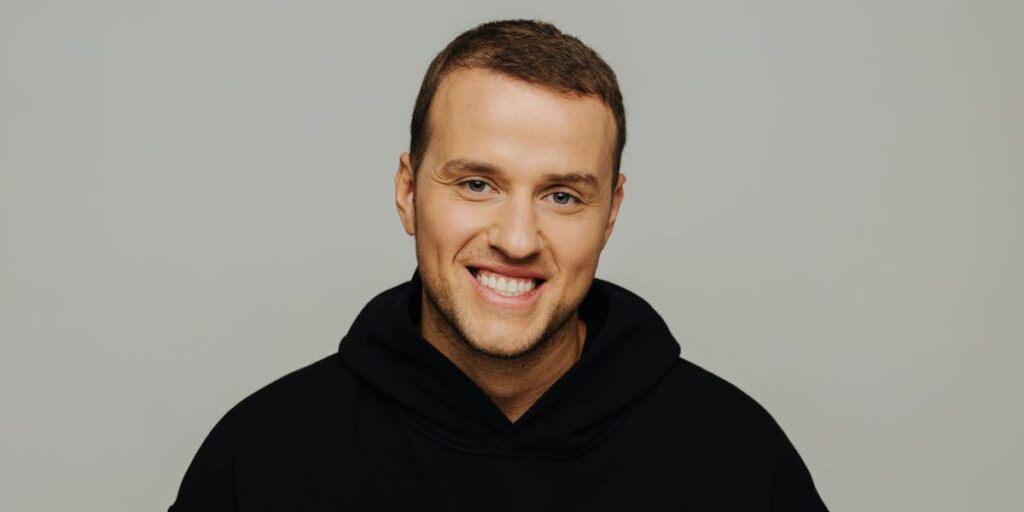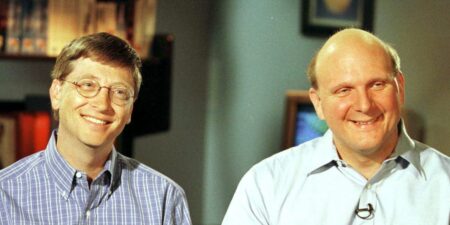Vadim Fedotov first learned about visualizing success after a knee surgery at 23.
In the early 2000s, Fedotov played power forward for the Buffalo Bulls, the University of Buffalo’s NCAA Division I basketball team. He worried about repeat injuries on the court — during an eight-year professional basketball career, he had four ACL tears.
Fedotov, 44, told Business Insider that he began seeing a sports psychologist in his junior year to “talk about the mental aspects of the game.”
The psychologist taught Fedotov about visualization techniques, commonly used in sports to mentally rehearse the steps to reaching success.
“It started off with a very hesitant approach,” Fedotov said. When he saw “quantifiable improvement” in his three-point percentage, it became a regular part of his routine.
Many years later, in 2019, he applied the same visualization techniques when he started Bioniq, a supplement company that creates personalized formulas based on bloodwork.
“If you can’t imagine what you’re trying to do, then you’re not going to do it,” Fedotov said.
Visualizing relaxed him on the court
Like many athletes, Fedotov was routine-focused. He didn’t waver from his diet and went to bed at the same time every night. Eventually, he tacked on visualization techniques the nights before games.
For about 10 minutes, he’d close his eyes in a quiet space and slow his breathing, visualizing the feel of the court and specific situations like free throws and defensive plays. He would picture the moments after making a basket, too, like the sounds of the crowd or his coach’s reaction.
The idea was to create “muscle memory through thoughts.”
He compared it to programming your body ahead of time. “Your body and your mind don’t have to come up with something to do — they already know what’s going to happen,” he said.
He felt calmer, and in a few months of consistent practice, saw improvement in how often he scored.
That success convinced him to continue with visualization long after his basketball days were over.
He applied the techniques to starting a company
Fedotov’s idea for Bioniq came from experience. In his early 30s, he was trying to optimize his health. He couldn’t find a company that provided tailor-made suggestions on what nutrients he needed to improve his cognition or longevity.
He first visualized Bioniq as filling the gaps he saw in the market: supplement brands with no customization or “real reason to stay loyal” and at-home blood tests that offered no follow-up to address issues.
He said visualizing the brand’s success wasn’t about imagining the fun parts of reaching the end goal, like press interviews or holding meetings as a CEO. It was about convincing investors and consumers to get on board in the first place.
“I knew we were entering a very crowded and complex space,” he said. He had to visualize who the clients were and what they needed to trust a new supplement brand.
Just like he did before basketball games, he’d find 10 minutes to run potential interactions with stakeholders in his head. “I’d imagine walking into the room, greeting everyone with calm energy, presenting the idea clearly,” he said.
He’d anticipate questions and how he’d respond, including to energy shifts in the room.
Fedotov, who previously worked as the CEO of Groupon in Eastern Europe, knew firsthand the common challenges — and high failure rates — of most startups. He anticipated roadblocks like having too niche of a market, lacking resources, or simply getting the timing wrong.
Visualization got him into a mindset where he felt knowledgeable and confident about the product even in high-stakes presentations.
He’d zoom in on tiny details in his mind, like a key slide in a deck or a conversation pivot where he knew he had to connect with his audience. Doing those mental reps ahead of time helped him “stay grounded when things were moving fast.”
Brainstorming future investors
Fedotov drew inspiration from brands like Nike, which, like Bioniq, features collaborations with prominent athletes.
In the early stages of the company, Fedotov remembers brainstorming with his small team about the “perfect embodiment” of the brand. It would have to be someone results-driven and dogged about their performance. Cristiano Ronaldo, considered one of the GOATs of soccer and known for his longevity in the sport, came up in the meeting.
Ronaldo became a Bioniq investor in 2024.
Visualization isn’t a magic cure-all for roadblocks. Fedotov said there were events he couldn’t have visualized when he launched the company, from Brexit to the pandemic. At launch, Bioniq’s business model relied on nurses visiting clients in their homes to take blood samples. Since then, Bioniq has added other versions of its supplements that don’t require blood biomarkers.
The early obstacles taught him that visualization, while a powerful tool, isn’t everything. The ability to pivot is just as important.
Read the full article here
















